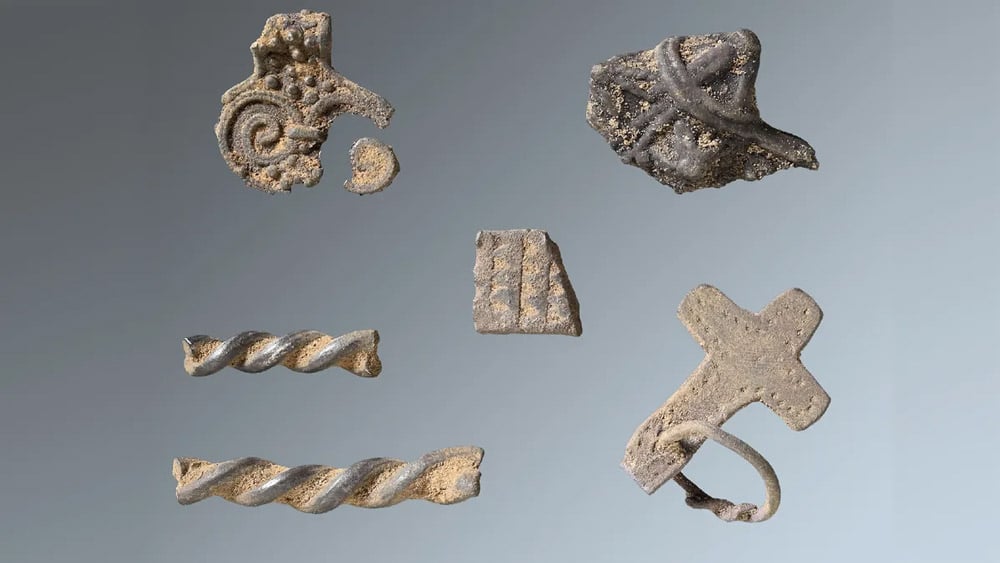Yet more Viking era treasure has been unearthed, this time in Northern Germany. By the banks of the Schlei River near Haithabu, Germany, metal detectorist Arjen Spiesswinkel made the impressive discovery. Spiesswinkel is part of a volunteer metal detector group, and this is not the first time he has stumbled across artifacts. Upon discovering the cache of items, he reported it to The State Archaeology Department of Schleswig-Holstein (ALSH) to come and do a systematic excavation of the site with their staff and volunteers.

Image credit: © ALSH, via https://www.livescience.com/
What the team eventually discovered was over 200 artifacts dating back to the Viking era. ALSH noted that the site consists of many buried or submerged objects which indicate they were likely placed in order to be hidden or as part of an offering ritual. The items were mostly silver or hacksilver and found to be pieces of Arabic coins or jewelry. The coins indicate that the area was a significant trade area, and it is possible that there was a larger, previously unknown settlement in the area as evidenced by discovery of ceramic shards and stone to sharpen tools in the vicinity as well.
While the area was known to be visited by merchants and was a Viking trading hub from the ninth to eleventh centuries, Christian missionaries were also known to have influence in the area. One such man was St. Ansgar, known as the “Apostle of the North” who was in the region around the ninth century. While it took centuries for Christianity to fully take root in the region, one of the archaeological finds supports that early influence—a delicate cross pendant. The piece of jewelry is thought to have belonged to an early convert to Christianity that may have lived there. Other experts theorize that the piece of jewelry could also possibly be an unfinished Thor’s hammer, because of known devotion to the Norse gods before the introduction of Christianity.
This find joins many other interesting Viking era discoveries across various parts of Europe and continues to educate and inform us of this significant period in history.
Sources
